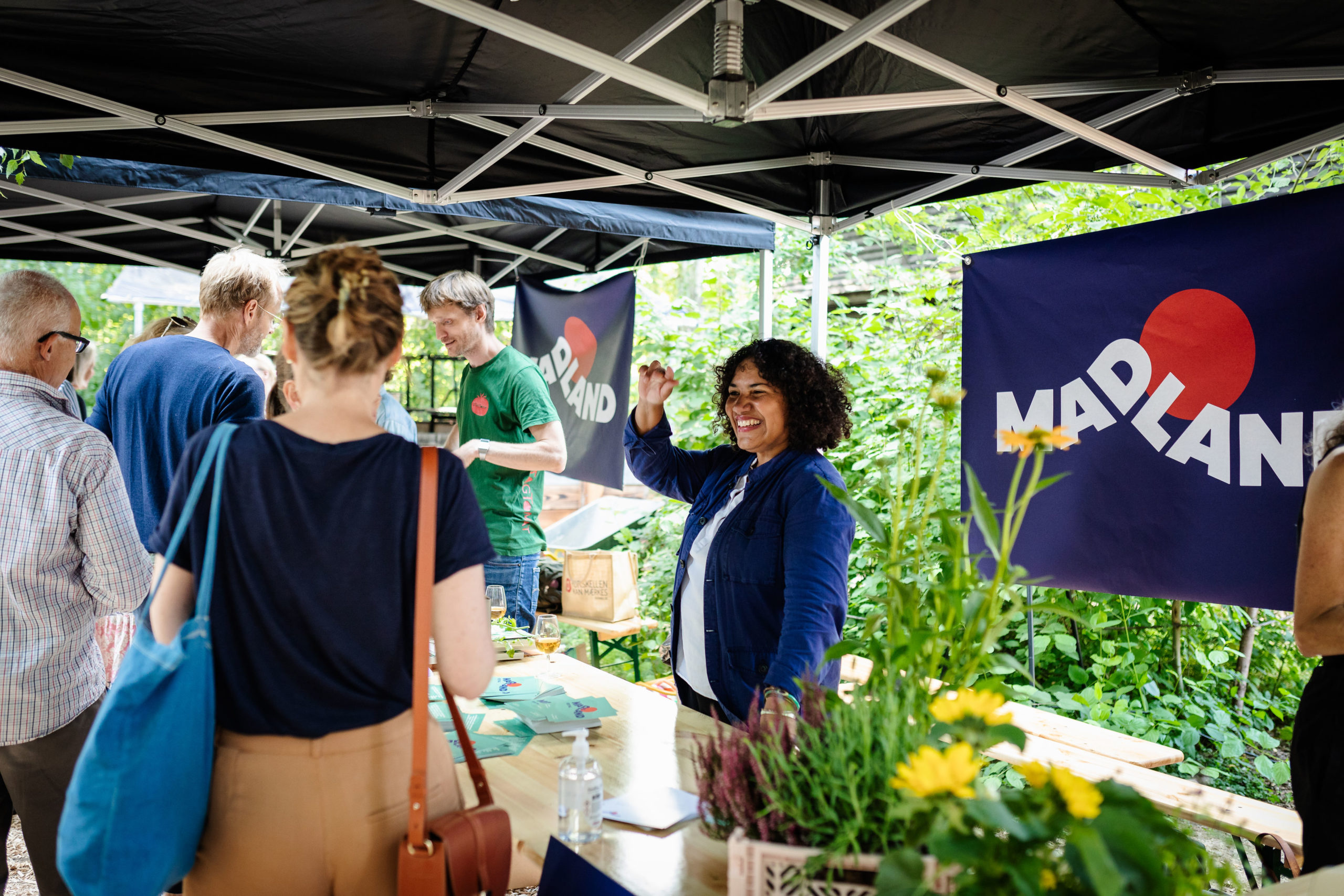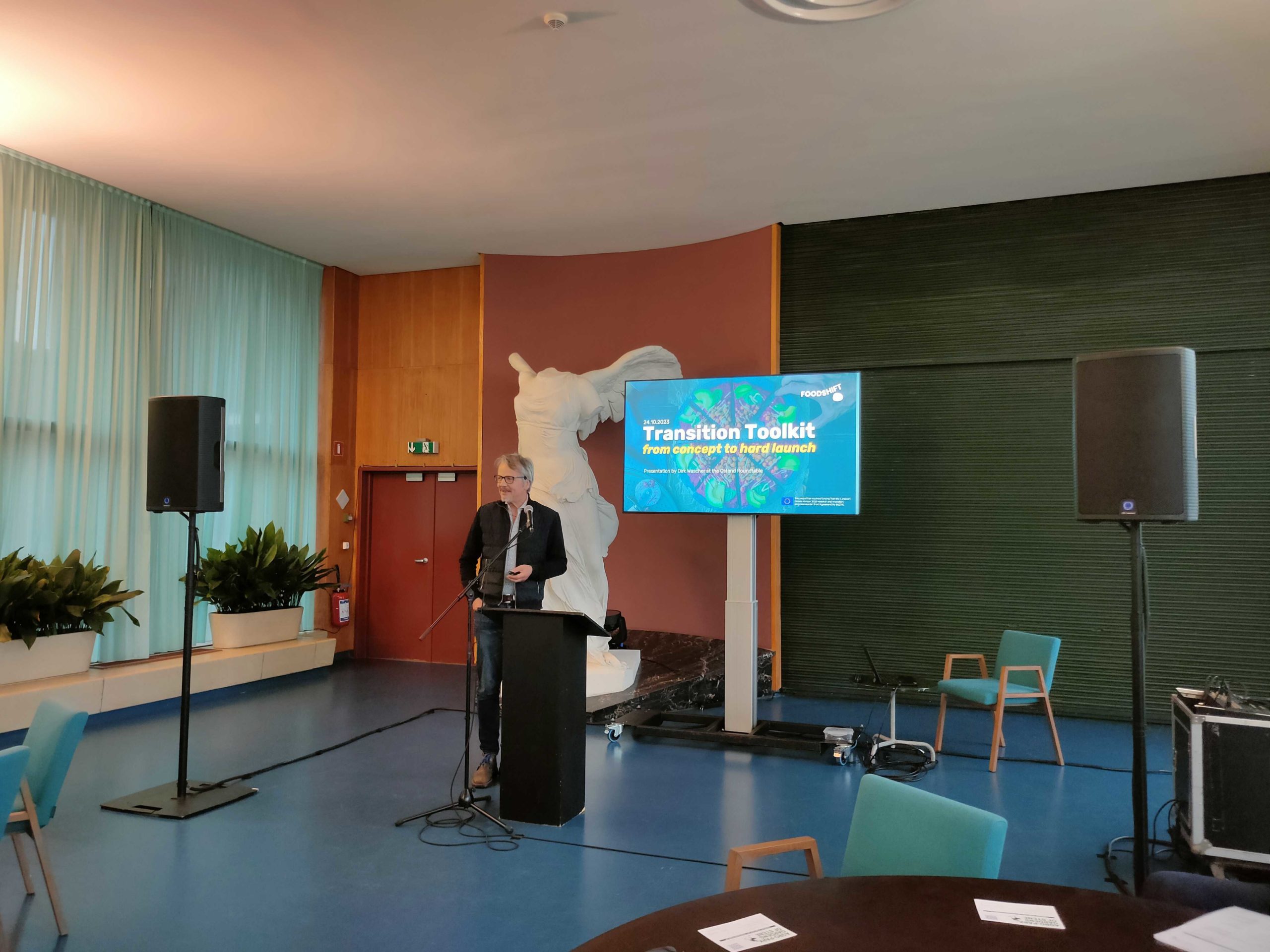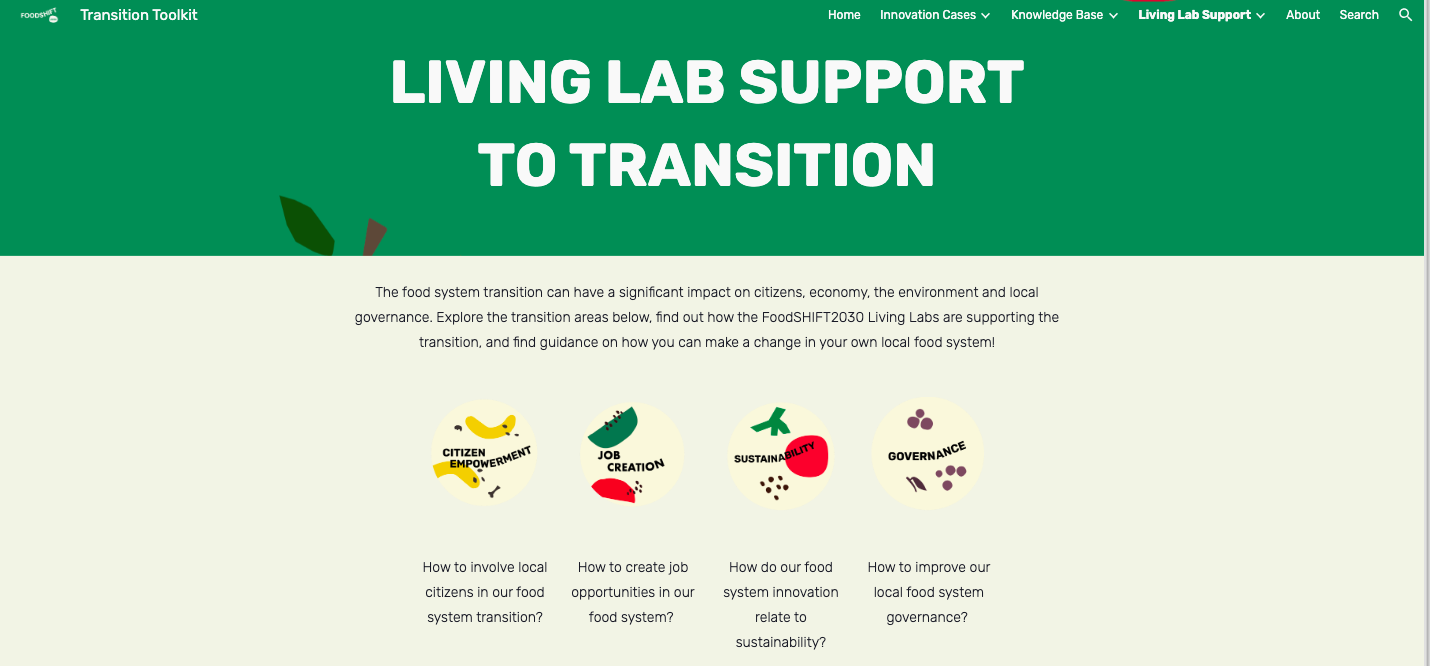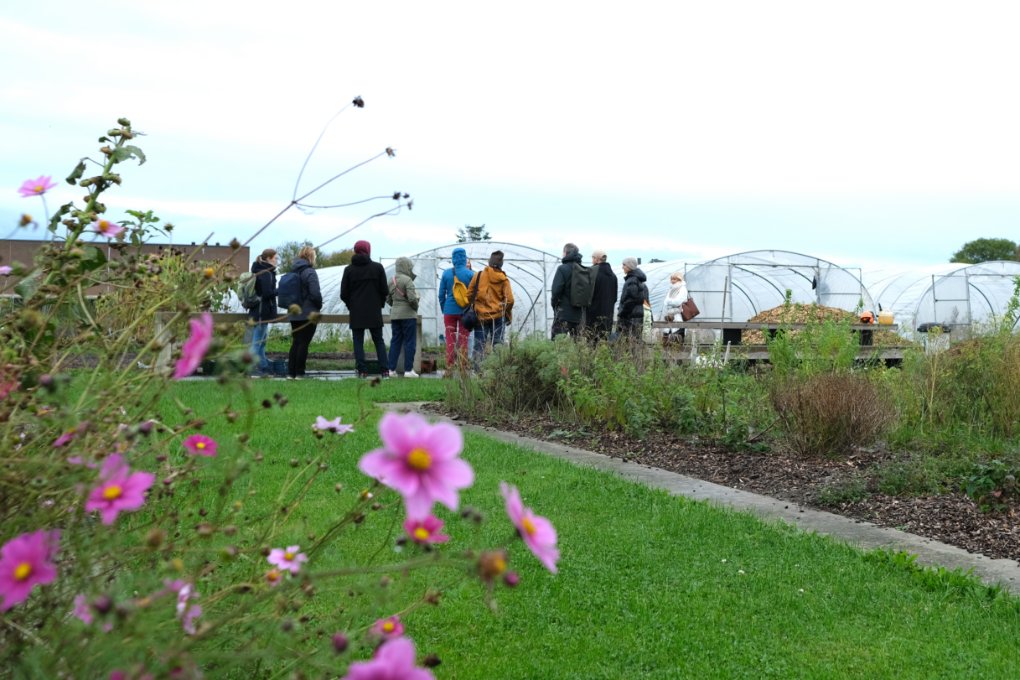Copenhagen’s story: Kitchen of tomorrow Lab
14 December 2023
Four years ago nine city-regions took on the challenge to establish FoodSHIFT Accelerator Labs. In this final blogpost, the Copenhagen Lab reflects on the journey and development made during the whole project, through an interview to the Copenhagen Lab coordinators. Explore the Transition Toolkit to to learn more about the other Lab’s experiences, Copenhagen’s city’s reports on innovation and governance and more.
Key takeways
- The Copenhagen focus was on reconnecting the city with its hinterlands by strengthening ties between food chain actors in public procurement
- They chose this focus of local procurement as a logical next step to build on the successful organic conversion of all the public kitchen in Copenhagen Municipality to a 90% share of organic produce in the last 15 years.
- The experience from the conversions in the kitchens led to an understanding that the kitchens need continuous motivation to stay on track. An organic percentage rising is motivational. This calls for a need for other easy and motivational data for the kitchens to follow to become more sustainable beyond organic
- For this reason, a tool to analyse procurement data on a range of indicators is developed. It can provide data on seasonality, country of origin and number and size of suppliers – and hereby provide transparency for the kitchens
- By now, this tool was launched and used successfully in a multitude of kitchens in Denmark and beyond
- This is especially impactful when seeing the challenges, the Copenhagen city faced during the project: some project partners left the project due to changing political agendas and business closures while the strong Danish farming lobby advocated for competing interests
- For a city wanting to embark on a similar journey, the recommendation is to establish a lab leader, build out key competences and ideally gain direct municipal support
Interview with the Copenhagen Lab Coordinators
What was your city’s specific focus in your food system transition and how did you initially start working with this focus area in your city?
Line Rise Nielsen
It is a bit of a special story about the Copenhagen lab which might require some backstory. When we started discussions of being part of FoodSHIFT, there was an organization in Copenhagen called “Copenhagen House of Food”. They had been responsible for an organic conversion of all the public kitchens in Copenhagen and Denmark overall over the last 15 years. Just before we got in contact with FoodSHIFT, we had started to look into what would be the next step since, at that point, we had nearly achieved our goal of being 90% organic, in the Copenhagen municipality at least. We were almost close to achieving that goal and then we decided that we would recommend for the politicians to aim for short supply chains and having the rest of Zealand, the “backyard” of Copenhagen, included.
That was the basis on which we started to have a dialogue in the Copenhagen lab between three or four municipalities and a region and we started to see that we needed some money to figure out what the way ahead could be. And then one of the municipalities, Lejre municipality, and us, started designing this project called Kitchen of Tomorrow. That is the Copenhagen lab headline. A kitchen of tomorrow is a sustainable kitchen that is organic, of course, but also takes responsibility for the hinterlands and the prosperity for producers and food culture. We also have this Nordic cuisine development in Denmark. This means that it is not only about the soil, but also for the people and for the culture and the understanding of identity. Unfortunately, Copenhagen House of Food was closed just before we started the FoodSHIFT project, and we had a bit of a disturbance in that. But the main thought of collaborating with rural municipalities or rural areas was still very much part of our FoodSHIFT lab.
But because we wanted to buy local, we also wanted to understand what local actually means. Because “nearby” or “kilometers” is not enough of a description. And that was when the idea started on having a calculator or a tool to analyze the procurement data in a way where we could say something more substantial about where the food comes from, to help create more transparency, and to create this connection between urban and rural areas. That was the goal.
What were some obstacles or challenges you faced in your food system transition and how did you overcome them (or are planning on overcoming them)?
Line Rise Nielsen
One thing that really influenced us was that the political agenda shifted in Lejre municipality, actually ending up in Lejre leaving FoodSHIFT. This highlighted the importance of having flexible multi-functional lab members to take on extra lab host roles left by the municipality. One example being to lead the citizen engagement initiatives for the lab.
Another challenge, I think, is that we have a situation in Denmark, where we have a very strong farming lobby. 65% of Denmark’s area is farming. And 85% of that is animal production. This results in a very high focus on technical solutions on lowering CO2 emissions in animal production. Even though the more logical way would be to reduce animal production, because we know that it is the key to lowering CO2 emissions. I think the biggest barrier, or the biggest constraint, is that it is very hard to shift the agenda to talk about other sustainability issues than CO2 emissions. And every time I’m talking with a chef, just the two of us, then he says “I don’t understand this CO2 emission thing. I don’t know how to act in my kitchen. I don’t know what’s the right thing to do.”. What we could see when we did the organic conversion was that because it was black and white, it was very easy to measure. It was very easy to be motivated by. We have this kitchen organic certification, which is a bronze, silver and gold medal. And of course, it’s self-explanatory. You want to have the golden medal because then you’re doing good. But what do you do with CO2 emissions? You have to lower a percentage of something that you can’t see. And I really want to translate all of that discussion into saying: you have to eat less meat. And you can do it while you are converting into organic because then you have the advantages of these silver, golden medals. But it’s really difficult to be allowed to talk about it in such a simple manner.
And again, people don’t comprehend the scale of it. And they can’t see the soil quality when they are shopping. So, their attention gets shifted to food waste, or plastic or transportation kilometers, or something that they can see and understand. So, this connection with the rural area, really understanding what difference it makes for soil quality, with regenerative and biodynamic and organic farming. That discussion is lost in the cities. It’s really, really hard to re-establish. And again, that is why I try to focus on doing this shift with chefs. Because they can take responsibility on behalf of a lot of people and explain the story by preparing meaningful meals for a lot of people.
If you look back on the last four years, what would you say were your biggest achievements or impacts that you achieved during the project?
Line Rise Nielsen
I collected a lot of testimonials on how frustrating people think it is to work with CO2 emissions in public kitchens, and that they want to dig deeper. And one of the kitchens is the kitchen in the UN City, where they actually wanted to translate the SDGs into something tangible in the canteen. So, they need this “Hey, what should we do on a Wednesday to be the most sustainable canteen?”. And showing that an analysis of the procurement data is actually a very good tool. So that is, I think, a really good achievement of FoodSHIFT.
Luke Schafer
Besides, the “Choose your own adventure” canteen campaign was a successful multi-stakeholder initiative driving citizen engagement with the Copenhagen Lab Ecosystem. The canteen campaign serves as a novel methodology for directly connecting canteen users with the broader food strategy at canteens at the University of Copenhagen.
Marin Lysák
On top of that, we really put effort into supporting innovator initiatives, for example by hosting events and making connections for further exchange between innovators and other stakeholders. We generally created outreach and knowledge sharing possibilities through a multitude of events.
What advice do you have for other cities who want to embark on a similar journey?
Marin Lysák
There are a few things I could recommend, for example:
- People – focus on the people that are ready, willing and motivated to contribute to food system transformation
- Local facilitators – it’s of upmost importance to secure long-term funding for lab leader role or central facilitator to connect stakeholders and broker actions
- Importance of knowledge sharing between food system actors such as city regions at different stages in their food system journey
- Exposure to different ways of doing things through events, visits, networks or alike
- Foster and create opportunity to collaborate in new ways
- Inclusion of food system innovators in local food system transition
- The value of inclusivity and diversity
Contact details
University of Copenhagen
Luke Schafer – [email protected]
Marin Lysák [email protected]
Changing Food
Line Rise Nielsen [email protected]
Agrain
Karin Beukel – [email protected]
Check out the previous blogpost by the Copenhagen Lab:
Exploring the Copenhagen Food System – Stories from our FEL Visit
Madland & FoodSHIFT setting the stage for the food systems of the future



